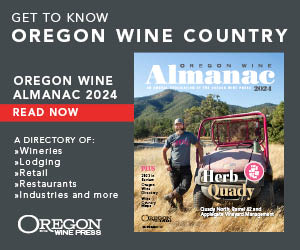Dwindling water requires concerted county action
Newly elected Commissioner Casey Kulla is taking the reins of the county’s Water Task Force, building on work begun by Commissioner Kathy George and continued by Commissioner Mary Starrett.
Like George, Kulla’s a farmer. And no one appreciates water more than a farmer whose livelihood depends on it. So we’re in good hands.
We appreciate the contributions of George and Starrett, both of whom displayed a high degree of passion. But we think it’s time the task force tackle a more ambitious project — conducting or commissioning a comprehensive study of the county’s groundwater supply and the degree to which continued development is contributing to its depletion.
No arm of government can address an issue effectively without solid evidence. Unfortunately, we are facing a serious void in that regard, and it must be filled.
The issue has come to the forefront in recent applications for development of new water-intensive wineries and breweries in rural parts of the county dependent on groundwater.
The traffic issue perennially raised by opponents of all developments, urban and rural, tends to ring rather hollow. Moreover, we believe other opposition concerns are often greatly overstated.
However, concerns about groundwater in Yamhill County define an element that resonates with us.
Aquifiers are drying up around the county, including the nation’s largest — the massive Ogallala, which underlies the Great Plains of Nebraska, Kansas, Oklahoma, Texas and parts of South Dakota, Wyoming, Colorado and New Mexico. It is reeling under the impact of climate change. Geologists estimate a full Ogallala replenish would take 6,000 years — 60 centuries.
As local farmer and land-use activist Ilsa Perse warned at a recent county hearing, “You can only put so many straws in the ground.”
Four local cities — Newberg, Dundee, Dayton and Lafayette — are sucking up copious quantities of groundwater to support dense, high-use urban development. That adds to the drain from rural residential, commercial, agricultural and industrial users, increasingly associated with the county’s burgeoning wine industry.
Katherine Jernstedt, a local farmer-activist speaking at the same hearing, noted, “This is a traditional dryland farming area for a reason.” And viticulture defies that, she said, because it takes six gallons of water to produce each gallon of wine.
Accommodating the wine industry to the best of our abilities is paramount, as it is increasingly becoming the engine steering the economy. However, we can’t afford to be naive.
We once thought the supply of timber, oil, gas, gold, topsoil — even biological resources like the buffalo — were limitless. They were so plentiful in our early history they seemed as inexhaustible as the now-imperiled Amazon rainforest. We have long since learned otherwise.
So it is with the fresh water supply needed to quench our thirst, irrigate our crops and meet a broad number of other critical needs. If we can drain the vast Ogallala, which once contained enough water to cover the country a foot and a half deep, we can most certainly drain its minuscule local counterparts.
It’s time to answer the call.









Comments